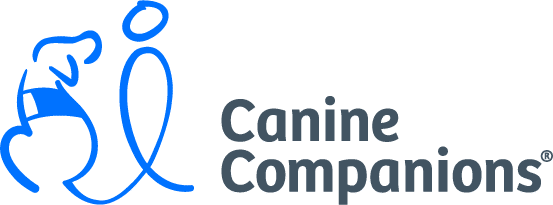Hi! My name’s Kim. I’m calling from Canine Companions.
Hi! How are you?
I’m good. How are you?
We’re good. We’re really excited to talk to you today because Build a Bear is going to be naming a dog. Fans can go on the Build a Bear website buildabear.com and, over the next few days, vote on what the name of this yet-to-be-born service dog will be.
It’s an online contest.
Yes, that is correct. We’re really excited about it too.
Tell us a little bit about your organization. What inspired its creation?
Canine Companions were founded back in 1975. At that point there were guide dogs out there in the world but no one had really started training dogs to perform practical tasks for people with other physical disabilities. So we felt there was a need and that’s kind of where Canine Companions was born in Santa Rosa, California.
That’s so cool. We actually do a Bear of Good News story where I share a feel-good story. Last week on the show there was a story about this dog that was trained for a girl who was in a wheelchair. The dog could actually swipe credit cards, open fridges and knew when something was going on with her before she even knew something was about to happen, which is really cool. Dogs are so intuitive. So great.
Yes, absolutely. It’s pretty incredible what you can train a dog to do.
So how does the organization work? How does the actual training work? I’d love to know.
Basically our puppies are born through our breeding program here in Santa Rosa California. For the first eight weeks of their lives, they are introduced to different sights and sounds and have the important bonding time with their mothers. Once they are about eight weeks old, they come here to our campus in Santa Rosa, California. They visit our vet clinic for the first time. They get all their vaccines and their first bath and then they’re distributed to their volunteer puppy raisers. For the next year and a half the puppy works with their volunteer puppy raiser. During that period of time they are doing a lot. They are learning how to walk nicely on a leash. They’re learning upwards of somewhere between thirty and forty commands.
Wow!
They’re being socialized in public places which is really, really huge, We do this so the pups are socialized. They get to know what to expect when out in public places. They gain confidence as they are exposed to a lot of different sights and sounds and smells. This prepares them for their work as an assistance dog in the future. So at the end of that year and a half period, the pups are turned in to their local regional Canine Companions office and they start their professional training.
Professional training takes about five to nine months. They are assigned to a specific trainer. Each day they learn new commands. They practice working next to all different types of equipment like wheelchairs, walkers, crutches. They learn how to do things like pick up dropped items, turn on light switches and a wide variety of tasks. At the end of that training period they are ready to be matched with someone from our waiting list and that is when we put the two pieces together…the person and the dog.
That is so cool. What is the most unique thing you’ve ever seen a dog do?
One of my all time personal favorites is what we call the “soda command.”
The dog goes up to the refrigerator. There’s a tug strap hanging from the door. The dog uses that to open the refrigerator then goes into the refrigerator and grabs a can of soda or a bottle of water. The dog picks it up, comes out of the fridge and closes the door with its nose. The dog then delivers the beverage to their person.
My gosh, that is so cute I wish I had that at home.
We’re gonna play a couple songs and we’re gonna talk to Kimberly some more about Canine Companions. So don’t go anywhere.

